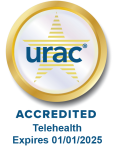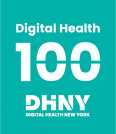With a more acute focus on how we use healthcare resources to treat our most at-risk COVID patients, we will see a better outcome for all, while reducing the harmful effects on those not at risk.
By Keith Algozzine, PA-C, founder and CEO, UCM Digital Health
It’s time for both the longstanding medical leadership and healthcare entrepreneurs to step up and speak out for our patients. Medical leaders who oversee providers of care can no longer sit on the sidelines and watch under the guise that this is simply a public health problem. We took an oath to our patients – and they deserve our very best care. It’s time to re-shift our COVID focus.
Countless frontline healthcare workers provide care and so more each and every day; they are doing their part. The scientists and the researchers, they’re doing their part too. And it’s not the patients’ responsibility to solve a pandemic.
But, as entrepreneurs, thinkers, problem-solvers, and medical leaders within healthcare, we must do more. We must better allocate our resources in order to more effectively care for the most at-risk COVID patients, while minimizing our harm to our low-risk patients. If we can do that, we’ll drastically lessen COVID’s impact.
The data will lead us to a solution.
When the pandemic first hit, we simply didn’t have much knowledge. We locked down, we cared for patients as best as we could when resources ran low or completely ran out. We dealt with staffing losses, and far too many patient deaths.
As we often do in healthcare, we worked towards a solution that was based on an initial hypothesis. Our initial COVID hypothesis was that masks, quarantines and lockdowns would be a reasonable short-term solution. Another reasonable hypothesis was to think that we would achieve herd immunity between those infected and those vaccinated.
I understand why we started out where we did with some hypotheses, they were reasonable guesses of an outcome based on the limited evidence we had at hand – both clinical and practical. However, the tincture of time has given us a gift: data.
We now know that those previous hypotheses were wrong. Time and data tell us that this disease will not be eradicated by a vaccine, by natural herd immunity, or by masks or quarantines or lockdowns. COVID, and its incessant variants, isn’t going away.
COVID is here to stay. Now what?
It is time to do what we do with every other disease: continue to look at prevention opportunities, while also accepting that it is a major disease that we will battle for the foreseeable future. But, we cannot resign ourselves to that fact. We must put a greater focus on risk stratification, focused prevention, appropriate diagnosis and treatments.
Entrepreneurs think about problems by figuring out what the real problem is – even though it’s not always obvious. Is the real problem positive COVID rates? Is the problem COVID deaths? Is the problem that hospitals are overwhelmed with COVID cases? Is the problem something else? We need more focus on the specific problem of severe COVID cases and deaths and less focus on indiscriminate broad based solutions based on indiscriminate undefined problems now that we have the data.
The indisputable data about COVID
We now know who is most likely to get critically ill and or die from COVID – the elderly, the chronically ill, and the obese. We also know how to reduce the risk of serious illness and death of those at high risk such as prevention of the high risk (vaccination) and diagnoses of the high risk (immediate testing if the patient is exhibiting any signs or symptoms) and treatment of those most at risk (early monoclonal antibodies and more treatments coming ). These simple, but powerful, data points alone should be enough to dramatically change from what we did to what we can do now. But that doesn’t seem to be happening.
We still seem to be completely focused on indiscriminate mass prevention. However, the numbers show us that prevention that is broad-based and undifferentiated that is not risk stratified has more risk than benefit. The data is proving that what we’re doing is not sufficient enough and in fact in many cases, harmful. We must listen to the data.
New York City, which has the highest vaccinated and natural immunity rates, is now going through one of the biggest outbreaks of COVID. Yet, there is still no hyper-focus on the real problem, which is those at most risk. Rather, leaders remain focused on global prevention for all (vaccine mandates, masks, quarantines and lockdowns) rather than focusing on the cases that need COVID prevention and care the most.
We have the data that has identified the problem, yet we’re not focused on it, and therefore not focused on the right solutions. Why?
Now, let’s look at how we handle two of the largest killers in the U.S. that we can’t eliminate completely with prevention: cardiovascular disease and cancer. We know who is at risk, we know how to lower the risk, how to diagnose cases, and we know what treatments can and cannot be done. We target specific populations where we risk stratify and focus most of our efforts on those at risk of serious illness or death, and, of course we spend time in all areas (prevention, diagnosis, treatment).
Let how we care for other diseases show us how to care for COVID.
Here’s something to think about: in healthcare, we focus prevention messaging on the groups that will benefit most from the prevention measures. Why? Because data tells us that we can identify specific groups of patients that are generally more susceptible to certain diseases.
For instance:
We don’t …
- equally educate 20-year-olds as much as we educate 40, 50, 60-year-olds on signs of cardiovascular disease
- spend time making sure men get mammograms
- direct teenagers on when to get routine colonoscopies
- make children aware of arthritis
- watch for signs of dementia in a toddler
We do …
- focus lung cancer prevention on smokers
- direct routine scans and tests based on the aging process and family history
- prescribe specific treatment plans for diabetes patients
- identify those patients who are immunocompromised
- provide various levels of care for at-risk patients based on body type, chronic conditions
We treat patients based on many different factors, including their own true risk, risk tolerance and benefit profile. We focus the most prevention, diagnosis and treatments on those who benefit most in order to reduce morbidity and mortality.
Why not do everything we can for all patients?
The idea of unlimited prevention efforts for all, no matter what – vaccines, masks, lockdowns, quarantines, mass testing including asymptomatic healthy people, and so on – would seem to have no downside because it potentially keeps everyone healthy, right?
Well, no.
Mass prevention messaging and mandates for all means presenting the worst-case scenarios to all, which leads to unnecessary panic, increased depression, anxiety, suicide, isolation, putting off needed medical care, drug and alcohol abuse, divorce rates, increase in domestic violence, job loss, economic loss, and more.
We need to stand up for our patients who are not at high risk for morbidity and mortality from COVID so they don’t suffer the real risks of the fallout that comes from over prevention and over diagnosis.
In my opinion, the worst way we are failing our patients is one of the most basic principles of healthcare and business: resource allocation. There are only 24 hours in a day, 7 days in a week, and 365 days in a year. Time is the most precious resource we all have, and every moment and resource – the meetings, planning, execution, etc. – not spent on those who are not at high risk for morbidity and mortality is a moment and resource NOT spent on those who are! Think of it this way: every moment and resource spent on prevention is a moment and resource NOT spent on proper risk stratification, early diagnosis of those at risk and effective early treatment of those at risk.
Every healthcare worker and public health official focused on educating, preventing, and diagnosing the young and healthy all only have the same 24 hours in a day, 7 days in a week and 365 days in a year, and they can’t do everything for everyone. We are already asking them to do so much.
So, in focusing so much on helping those who really don’t need help, we dramatically hurt those who do need our help. For example, an 85-year-old has 1000x greater risk than a 5-year-old of dying from COVID. The healthcare system needs to focus care on those who need it most and stop harming those who don’t.
Lessons from the ER
Let me give a real example from my specialty, emergency medicine. We don’t treat all patients with chest pain the same. We don’t treat a 22-year-old with a cough and chest pain the same as a 75-year-old with chest pain, nausea and diaphoresis because of a simple reason: resources.
If we had our ER providers and cardiologists and the beds in the ER and Cardiac lab tied up with low-risk chest pain patients, what would happen when the actual high-risk patients needed us? People would suffer. A healthy 22-year-old would suffer unnecessary economic harm, unnecessary treatment harm and possible side effects from that treatment, and the people who needed the ER team and Cardiology team would not have their lives saved.
Let’s go back to the example from New York City. Remember: NYC is the most vaccinated and naturally immune place in the U.S., yet we are now facing a testing crisis, with long lines and the access to tests dwindling each day. There is also concern that the hospitals will be overwhelmed again. Both of those are a resource problem.
Too many tests are being given to a healthy child or young healthy adult. In some cases, now young healthy people are testing themselves three times a week – these are the very people who have the lowest risk of morbidity or mortality from COVID. Because of this, those at real risk, can’t get a test in a timely manner, which means they can’t get an early diagnosis and therefore can’t get early effective treatments…because of this, they will have a higher risk of morbidity and mortality.
It’s time for the healthcare thinkers to rethink how we are using our resources in order to put our patients first and more effectively manage the new norm with COVID.
The solution is to focus on those who need us most while leaving alone those who don’t need us.
We need to get back to our roots, to focus on helping the patients who need us most. We can stop being afraid of what the media, public health or politicians will say about us. We went to school and took an oath for our patients, so we must help them. Remember “first, do no harm”? We are doing real harm by our actions and we must stop.
We need to risk stratify those who are at most risk. Then we put the full-court press on those high-risk patients who need us the most (prevention, early diagnosis and early treatment), and we look at the data, we measure it, we learn from it, and we adjust what we do. We repeat that cycle over and over again with unrelenting and unbiased efforts towards helping our patients.
In terms of the young and healthy who may get COVID, we must trust the knowledge we have gained as medical providers over the years. And, we tell them the truth; we tell them that as long as they are young and healthy, they will likely be just fine if they get COVID. And, we educate them not to fear COVID because the data says they shouldn’t fear it, but to reach out to us as their providers, if they have any questions or concerns along the way. Most importantly, we reassure them that the overwhelming data we have says that they will be just fine, and instruct them to stay at home until better, wash their hands, drink plenty of fluids, and rest.
I promise you, as a healthcare provider myself, when you say it with compassion and sincerity, your patients will thank you. You will be helping them and those who really need the precious resources to care for our most vulnerable patients. The resources it takes to get through COVID includes each and every one of us having the compassion to focus on and care for those who are most at risk and stand up and start fighting for our patients when we see things that are harmful for them.
Keith Algozzine, PA-C is a board certified Physician Assistant and co-founder and CEO of UCM Digital Health. He believes that the virtual ER will change the way emergency healthcare is delivered. A passionate advocate for change in the emergency medicine, he is committed to ensuring patients receive the right care, at the right time — when and where they need it most. often authors blog posts on topics related to virtual emergency medicine and the innovations around telemedicine that are changing the way healthcare works.






